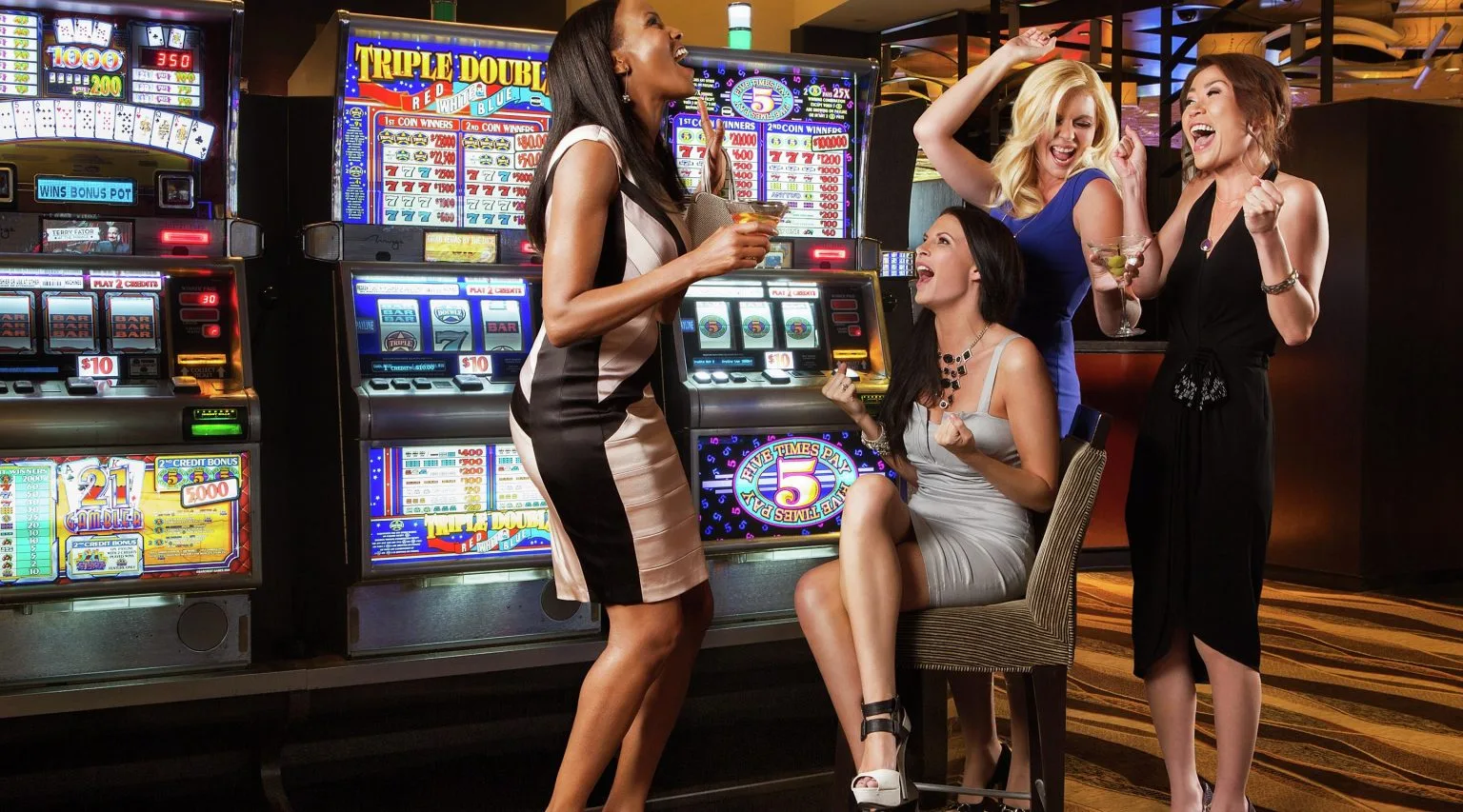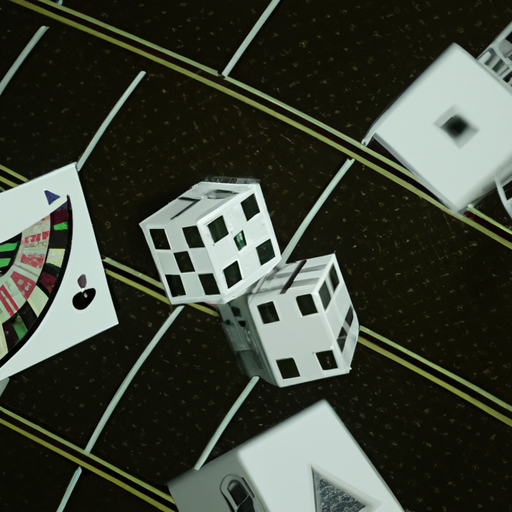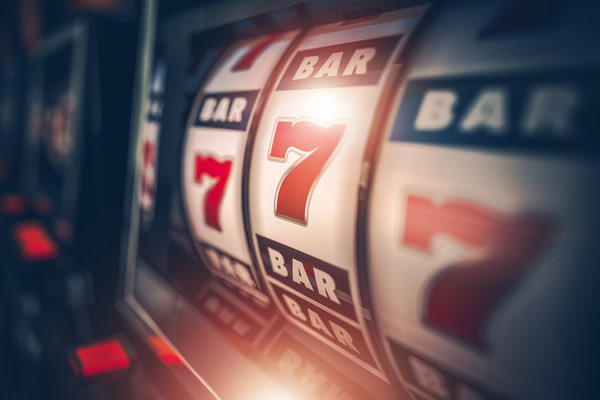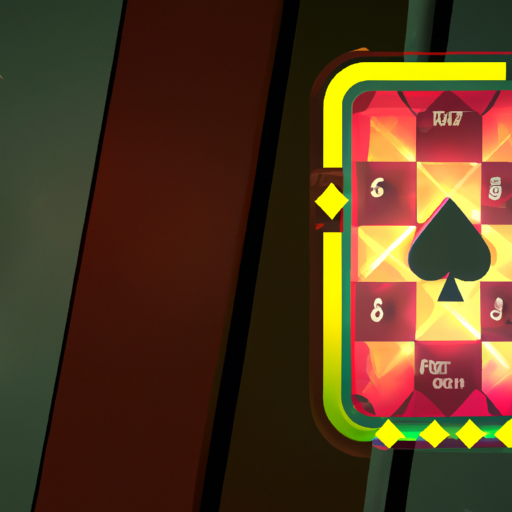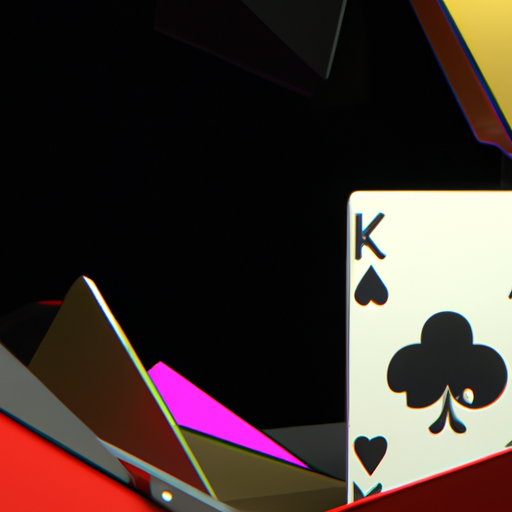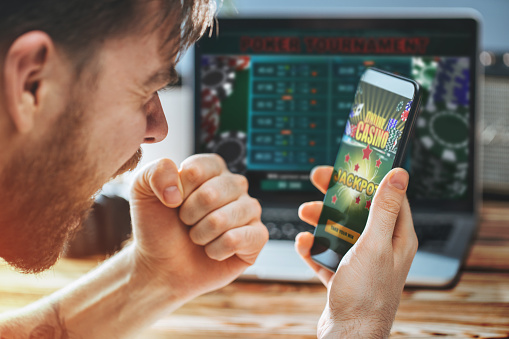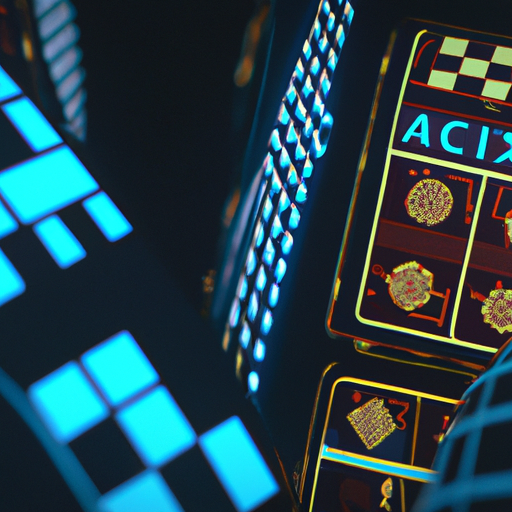
-
TopCasino Slots On-line Slots, Blackjack, Roulette, Betting & Gambling Critiques & Guides: TOC
- Introduction
- The History of Probability Theory in Slot Design
- The Importance of Randomness in Classic Slot Machines
- How Probability Theory Shapes the Odds of Winning in Slots
- The Role of Probability in Bonus Features and Jackpots
- The Impact of Probability on Payout Percentages
- The Use of Probability Theory in Slot Machine Testing and Certification
- The Future of Classic Slot Design with Probability Theory Advancements
- Understanding the Mathematics Behind Classic Slot Machines
- Exploring the Relationship Between Probability and Slot Machine Psychology
- How Probability Theory Affects Player Behavior and Betting Strategies
- The Influence of Probability on Slot Machine Themes and Symbols
- Comparing Classic Slot Machines to Modern Video Slots Through a Probability Lens
- Examining the Role of Chance in Classic Slot Machine Strategy Guides
- The Intersection of Probability Theory and Responsible Gambling Practices
- Applying Probability Theory to Improve Classic Slot Machine Performance
- Q&A
- Conclusion
"Probability principle: the basis of classic slot design."
Introduction
Probability principle plays a essential function in the Design of Classic Slot machines. It's used to find out the odds of winning, the payout percentages, and the total profitability of the game. By understanding probability principle, designers can create video games which are each entertaining and fair for gamblers. In this article, we will discover the significance of probability principle in classic slot design and how it impacts the gaming expertise.
The History of Probability Theory in Slot Design
The world of slot machines has come a long way since the first mechanical slot machine was invented in 1895. At the moment, slot machines are a staple in casinos around the world, and their design has advanced to include complicated algorithms and superior expertise. Nevertheless, at the heart of each slot machine is probability principle.
Probability principle is the department of arithmetic that deals with the examine of random occasions. It's used to calculate the chance of an occasion occurring, based on a set of identified variables. In the context of slot machines, probability principle is used to find out the odds of winning and dropping.
The historical past of probability principle in slot design will be traced again to the early days of mechanical slot machines. These early machines have been simple in design, with only a few symbols on every reel. The odds of winning have been decided by the quantity of symbols on every reel and the quantity of reels in play.
As expertise superior, so did the complexity of slot machine design. In the Sixties, electronic slot machines have been launched, which allowed for more complicated algorithms to be used in figuring out the odds of winning. These algorithms took into account components akin to the quantity of symbols on every reel, the quantity of paylines, and the frequency with which certain symbols appeared.
At the moment's trendy slot machines are even more complicated than their predecessors. They use refined algorithms that take into account a huge range of variables, including player habits and game historical past. These algorithms are designed to make sure that every spin is completely random and impartial from earlier spins.
The function of probability principle in trendy slot design can't be overstated. Without it, it could be unattainable to create fair and balanced video games that provide gamblers a likelihood to win big prizes. Probability principle permits designers to calculate precisely how a lot cash needs to be paid out over time, making certain that casinos can make a revenue whereas nonetheless offering gamblers a fair likelihood to win.
In addition to its function in figuring out odds and payouts, probability principle can be used in the design of bonus features and different game mechanics. For instance, many slot machines supply free spins or bonus rounds which are triggered by certain mixtures of symbols. These features are designed to keep gamblers engaged and enhance their chances of winning.
General, the historical past of probability principle in slot design is a fascinating one. From the early days of mechanical slot machines to today's superior electronic video games, probability principle has played a essential function in making certain that slot machines are fair, balanced, and exciting for gamblers. As expertise continues to evolve, it will be interesting to see how probability principle is integrated into future slot machine designs.
The Significance of Randomness in Classic Slot Machines
The world of classic slot machines is a fascinating one, with its bright lights, spinning reels, and the promise of big payouts. However what many people don't notice is that behind the glitz and glamour lies a complicated mathematical system that determines the final result of every spin. This system is based on probability principle, which plays a essential function in the design of classic slot machines.
At its core, probability principle is all about predicting the chance of certain occasions occurring. In the context of classic slots, this means figuring out the odds of totally different mixtures of symbols showing on the reels. For instance, if a machine has three reels and every reel has 10 symbols, there are 1,000 doable mixtures (10 x 10 x 10) that might seem on any given spin.
However not all of these mixtures are created equal. Some are more prone to happen than others, and it's as much as the designers of classic slot machines to find out which ones will consequence in payouts for gamblers. That is the place probability principle comes in.
By utilizing complicated algorithms and statistical fashions, designers can calculate the probability of every doable combination showing on the reels. They can then modify the payout percentages accordingly to make sure that gamblers have a fair likelihood of winning whereas nonetheless permitting the casino to make a revenue.
One key side of probability principle that's notably important in classic slot design is randomness. In order for a slot machine to be actually fair and unbiased, every spin should be completely random. Which means that there needs to be no way for gamblers to foretell or affect the final result of any given spin.
To obtain this degree of randomness, designers use refined software programs referred to as random quantity mills (RNGs). These programs generate 1000's and even millions of random numbers per second, which are then used to find out the place of every reel when it stops spinning.
However even with RNGs in place, there's nonetheless a point of predictability concerned in classic slot machines. It is because the odds of every doable combination showing on the reels are fastened, and gamblers can use this data to make knowledgeable selections about which machines to play and when.
For instance, if a machine has a high payout percentage for a certain combination of symbols, gamblers could also be more prone to play that machine in the hopes of hitting that exact combination. Conversely, if a machine has a low payout percentage for a certain combination, gamblers could keep away from it altogether.
Regardless of these nuances, probability principle stays an integral part of classic slot design. Without it, there could be no way to make sure that every spin is fair and unbiased, and gamblers would don't have any cause to belief the machines or the casinos that function them.
So the next time you sit down at a classic slot machine and watch the reels spin, keep in mind that there's a lot more going on behind the scenes than meets the eye. From complicated algorithms to stylish software programs, probability principle plays a essential function in figuring out your chances of winning – and in the end, whether or not or not you stroll away with a big payout.
How Probability Theory Shapes the Odds of Successful in Slots
Slot machines have been a popular form of entertainment for many years, with their bright lights and exciting sounds drawing in gamblers from all walks of life. However have you ever stopped to contemplate how these machines are designed to make sure that the home always wins? The reply lies in probability principle.
Probability principle is the department of arithmetic that deals with the evaluation of random occasions. In the context of slot machines, it is used to find out the odds of winning and dropping. Each slot machine has a set of symbols on its reels, and every symbol has a certain probability of showing on any given spin. The more probably a symbol is to seem, the decrease its payout will be.
For instance, let's say a slot machine has three reels, every with 10 symbols. One of these symbols is a cherry, which seems on one out of each 10 spins. One other symbol is a bar, which seems on one out of each 5 spins. And at last, there's a lucky seven symbol, which only seems on one out of each 100 spins.
Primarily based on these possibilities, we will calculate the anticipated payout for every combination of symbols. If you have been to hit three cherries in a row, your payout could be comparatively low as a result of cherries are pretty widespread. On the different hand, hitting three lucky sevens in a row would consequence in a a lot increased payout as a result of they're so uncommon.
However it's not nearly particular person symbols – it's additionally about how they're organized on the reels. Most classic slot machines have what's referred to as a "payline," which is a line that runs throughout the reels and determines whether or not or not you win. If you get matching symbols alongside this payline, you win; if not, you lose.
The quantity and placement of paylines can drastically have an effect on your chances of winning. For instance, if a machine has only one payline working straight throughout the center row, your odds of hitting a winning combination are comparatively low. But when a machine has a number of paylines working in totally different instructions, your odds of hitting a winner are a lot increased.
After all, the designers of slot machines aren't simply in creating a game that's fair – in addition they wish to make cash. That's why they use probability principle to make sure that the home always has an edge. The payout percentages for most slot machines range from 75% to 98%, which means that over time, the casino will keep wherever from 2% to 25% of all cash wagered.
However even with these odds stacked towards them, gamblers continue to flock to fit machines in droves. There's one thing undeniably thrilling about the risk of hitting it big and strolling away with a huge payout. And as long as people keep playing, designers will continue to make use of probability principle to create new and exciting video games that keep gamblers coming again for more.
In conclusion, probability principle plays a essential function in the design of classic slot machines. By analyzing the possibilities of totally different symbols and paylines, designers can create video games which are each entertaining and worthwhile for casinos. Whereas gamblers could not always come out on top, the thrill of the game is sufficient to keep them coming again time and time once more.
The Role of Probability in Bonus Options and Jackpots
The world of classic slot machines is a fascinating one, with its own set of guidelines and rules that govern the design and gameplay. One of the most important elements of classic slot design is probability principle, which plays a essential function in figuring out the odds of winning and the payouts that gamblers can anticipate.
When it involves bonus features and jackpots, probability principle turns into even more important. These are the components that may make or break a player's expertise, and they're typically what sets one slot machine other than another.
Bonus features are special rounds or video games inside a slot machine that provide gamblers additional chances to win. These can take many varieties, from free spins to pick-and-win video games to multipliers that enhance the value of every win. The key to designing efficient bonus features is to strike a balance between excitement and equity.
On one hand, bonus features needs to be exciting sufficient to keep gamblers engaged and in playing. They ought to supply one thing unique and totally different from the base game, whether or not it's a new visible theme or a completely totally different style of gameplay.
On the different hand, bonus features should even be fair and balanced. They mustn't give gamblers an unfair benefit over the home, nor ought to they be so difficult to set off that gamblers lose curiosity before they've a likelihood to expertise them.
That is the place probability principle comes into play. By utilizing complicated mathematical algorithms, designers can calculate the odds of triggering a bonus feature based on varied components akin to the quantity of symbols on every reel, the frequency with which certain symbols seem, and the total payout percentage of the machine.
By tweaking these variables, designers can create bonus features which are each exciting and fair. For instance, if a designer desires to create a bonus feature that triggers ceaselessly but offers comparatively small payouts, they could enhance the quantity of symbols on every reel or lower the total payout percentage. Conversely, in the event that they wish to create a uncommon but highly profitable bonus feature, they could lower the quantity of symbols on every reel or enhance the total payout percentage.
Jackpots are another important ingredient of classic slot design, and they too rely closely on probability principle. A jackpot is a special payout that's awarded when a player hits a specific combination of symbols, often the highest-paying combination in the game.
The odds of hitting a jackpot are sometimes a lot decrease than the odds of hitting different winning mixtures, which is why jackpots will be so profitable. Nevertheless, this additionally implies that designers should be cautious to balance the potential payouts with the chance of truly hitting the jackpot.
As soon as once more, probability principle comes into play. By calculating the odds of hitting every doable combination of symbols, designers can decide how a lot to pay out for every winning combination and how a lot to order for the jackpot.
They can even modify the frequency with which certain symbols seem on the reels to extend or lower the odds of hitting a jackpot. For instance, if a designer desires to create a machine with a high-paying jackpot but comparatively low total payout percentage, they could make it more difficult to hit different winning mixtures by reducing the frequency with which these symbols seem.
In conclusion, probability principle plays a vital function in classic slot design, notably when it involves bonus features and jackpots. By utilizing complicated mathematical algorithms to calculate odds and payouts, designers can create machines which are each exciting and fair for gamblers whereas nonetheless offering a worthwhile return for casinos. As expertise continues to advance and new traits emerge in gaming, it will be fascinating to see how probability principle evolves alongside them.
The Impact of Probability on Payout Percentages
When it involves classic slot design, probability principle plays a essential function in figuring out the payout percentages. Understanding how probability works is crucial for game developers to create fair and participating video games that keep gamblers coming again for more.
Probability principle is the department of arithmetic that deals with the examine of random occasions. In classic slot machines, the final result of every spin is decided by a random quantity generator (RNG). The RNG generates a sequence of numbers that correspond to the symbols on the reels. When a player hits the spin button, the RNG selects a quantity from this sequence, which determines the final result of the spin.
The payout percentage of a slot machine is decided by the probability of winning mixtures showing on the reels. For instance, if a slot machine has three reels and every reel has 10 symbols, there are 1,000 doable mixtures (10 x 10 x 10). If one of these mixtures pays out $100 and all different mixtures pay out nothing, then the payout percentage could be 0.1% ($100 / $100,000).
Recreation developers use probability principle to find out which symbols ought to seem on every reel and how typically they need to seem. They additionally use it to calculate the odds of winning totally different payouts. For instance, if a slot machine has 5 reels and every reel has 20 symbols, there are over three million doable mixtures (20 x 20 x 20 x 20 x 20). Builders have to fastidiously contemplate which mixtures will consequence in payouts and how a lot these payouts needs to be.
One way that game developers can enhance the payout percentage is by including wild symbols to the game. Wild symbols can substitute for any different symbol on the reels, rising the chances of hitting a winning combination. Nevertheless, developers have to balance this with making certain that gamblers don't win too typically or too easily.
One other issue that impacts payout percentages is volatility. Volatility refers to how typically a slot machine pays out and how a lot it pays out. Excessive volatility machines pay out much less ceaselessly but supply bigger payouts, whereas low volatility machines pay out more typically but supply smaller payouts. Builders want to contemplate the target market for their game and modify the volatility accordingly.
Probability principle additionally plays a function in figuring out the home edge of a slot machine. The home edge is the percentage of every bet that the casino expects to keep over the long run. For instance, if a slot machine has a payout percentage of 95%, then the home edge could be 5%. Recreation developers want to make sure that the home edge is high sufficient to make a revenue for the casino but not so high that gamblers really feel like they're being cheated.
In conclusion, probability principle is crucial for classic slot design. Recreation developers use it to find out which symbols ought to seem on every reel, how typically they need to seem, and how a lot they need to pay out. They additionally use it to calculate the odds of winning totally different payouts and modify the volatility and home edge accordingly. By understanding probability principle, game developers can create fair and participating video games that keep gamblers coming again for more.
The Use of Probability Theory in Slot Machine Testing and Certification
Slot machines have been a popular form of entertainment for many years, and their design has advanced considerably over the years. One key issue in the growth of trendy slot machines is the use of probability principle. This mathematical idea plays a essential function in making certain that slot machines are fair and dependable.
The use of probability principle in slot machine testing and certification is crucial to make sure that gamblers have a fair likelihood of winning. Earlier than a slot machine will be positioned on a casino floor, it should bear rigorous testing to make sure that it meets strict requirements for equity and reliability. This testing is carried out by impartial third-party organizations that specialize in gaming expertise and regulation.
Throughout the testing process, probability principle is used to find out the anticipated payout percentage of the machine. This percentage represents the amount of cash that will be returned to gamblers over time, based on the total amount wagered. For instance, if a machine has an anticipated payout percentage of 95%, this implies that over time, gamblers can anticipate to receive $0.95 for each $1 they wager.
To decide the anticipated payout percentage, testers use complicated mathematical fashions that take into account components akin to the quantity of symbols on every reel, the frequency with which every symbol seems, and the potential payouts for various mixtures of symbols. These fashions are designed to simulate 1000's and even millions of spins on the machine, permitting testers to precisely predict its long-time period efficiency.
In addition to figuring out the anticipated payout percentage, probability principle can be used to check different elements of slot machine efficiency. For instance, testers could use statistical evaluation to find out whether or not the machine's payouts are actually random or whether or not there are any patterns or biases that might give certain gamblers an unfair benefit.
As soon as a slot machine has been certified as fair and dependable, it will be positioned on a casino floor for gamblers to enjoy. Nevertheless, this does not mean that its efficiency is about in stone. In truth, many casinos repeatedly monitor their machines' efficiency to make sure that they continue to fulfill their anticipated payout percentages.
This monitoring is often done utilizing computerized systems that track the machine's efficiency in real-time. If a machine's actual payout percentage deviates considerably from its anticipated percentage, casino operators could take steps to regulate its settings and even take away it from the floor.
General, the use of probability principle in slot machine testing and certification is crucial to making sure that gamblers have a fair and satisfying gaming expertise. By utilizing complicated mathematical fashions to simulate 1000's of spins, testers can precisely predict a machine's long-time period efficiency and make sure that it meets strict requirements for equity and reliability. And by repeatedly monitoring their machines' efficiency, casinos can make sure that they continue to provide gamblers with a fun and exciting gaming expertise.
The Future of Classic Slot Design with Probability Theory Developments
The world of classic slot design has been revolutionized by the developments in probability principle. Probability principle is a department of arithmetic that deals with the examine of random occasions and their chance of incidence. It has been used in varied fields, including finance, engineering, and science. Nevertheless, its application in classic slot design has been a game-changer.
Probability principle has enabled designers to create more participating and exciting classic slots. The use of probability principle in classic slot design has allowed for the creation of video games which are fair and supply gamblers a likelihood to win big. The use of probability principle ensures that each spin is impartial and random, which implies that every player has an equal likelihood of winning.
One way that probability principle has impacted classic slot design is thru the creation of more complicated paylines. Paylines are the strains on which matching symbols should land for a player to win. In conventional slots, paylines have been simple and easy. Nevertheless, with the use of probability principle, designers have been capable of create more complicated paylines that provide gamblers more chances to win.
One other way that probability principle has impacted classic slot design is thru the creation of bonus features. Bonus features are special features inside a game that provide gamblers additional chances to win or enhance their winnings. Probability principle has allowed designers to create bonus features which are fair and supply gamblers a real likelihood to win big.
The use of probability principle in classic slot design has additionally led to the creation of progressive jackpots. Progressive jackpots are jackpots that enhance over time as more gamblers play the game. Probability principle permits designers to create progressive jackpots which are fair and supply gamblers a real likelihood to win big.
The future of classic slot design with probability principle developments appears bright. As expertise continues to advance, so too will the use of probability principle in classic slot design. This will result in even more participating and exciting video games for gamblers.
One space the place we will anticipate to see important developments in classic slot design is in the use of synthetic intelligence (AI). AI will be used to investigate player habits and preferences, which can then be used to create more personalised gaming experiences. This will result in video games which are tailor-made to particular person gamblers, making them even more participating and exciting.
One other space the place we will anticipate to see developments in classic slot design is in the use of virtual actuality (VR) expertise. VR expertise permits gamblers to immerse themselves in a game, creating a more reasonable and participating expertise. Probability principle will be used to create video games which are fair and supply gamblers a real likelihood to win big, even inside a virtual actuality atmosphere.
In conclusion, probability principle has had a important influence on classic slot design. It has allowed designers to create more participating and exciting video games which are fair and supply gamblers a real likelihood to win big. As expertise continues to advance, we will anticipate even more exciting developments in classic slot design with probability principle developments at the forefront.
Understanding the Arithmetic Behind Classic Slot Machines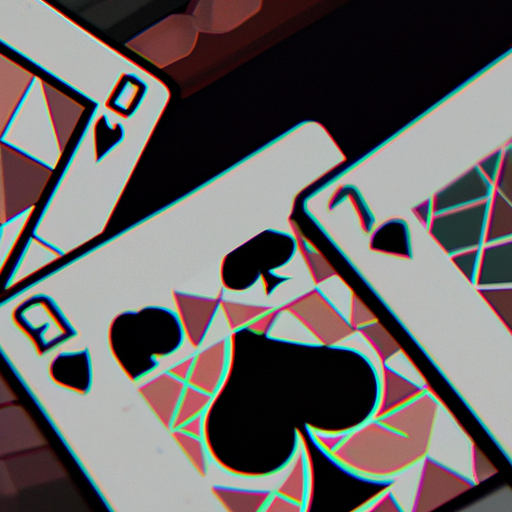
When you suppose of classic slot machines, you may picture the iconic three-reel machines with symbols like cherries, bars, and lucky sevens. These machines have been a staple in casinos for many years, and their design has remained comparatively unchanged over the years. However have you ever stopped to contemplate the function that probability principle plays in the design of these machines?
Probability principle is a department of arithmetic that deals with the chance of occasions occurring. In the context of slot machines, probability principle is used to find out the odds of winning mixtures showing on the reels. Every symbol on a slot machine reel has a certain probability of showing, and these possibilities are fastidiously calculated to make sure that the machine pays out at a certain rate.
One important idea in probability principle is predicted value. Expected value is a measure of what an final result is value on average. In the case of slot machines, anticipated value is used to calculate how a lot cash a player can anticipate to win or lose over time. For instance, if a player bets $1 on a machine with an anticipated payout rate of 95%, they will anticipate to win again $0.95 over time.
One other important idea in probability principle is variance. Variance measures how unfold out a set of information is. In the context of slot machines, variance refers to how typically winning mixtures seem on the reels. Machines with high variance pay out much less ceaselessly but supply bigger payouts after they do hit, whereas machines with low variance pay out more ceaselessly but supply smaller payouts.
Classic slot machines sometimes have low variance, which means that gamblers can anticipate to win small quantities pretty ceaselessly. This makes them popular among informal gamblers who're looking for entertainment quite than big payouts. Nevertheless, some gamblers want high-variance machines as a result of they provide the likelihood for big wins.
The design of classic slot machines additionally takes into account psychological components that may affect player habits. For instance, many machines use close to-miss outcomes to create the phantasm of a win. A close to-miss happens when two of the three symbols wanted for a winning combination seem on the reels, but the third symbol is simply off the screen. This may create a sense of excitement and anticipation in gamblers, though they technically did not win something.
One other psychological issue that classic slot machines take benefit of is the gambler's fallacy. The gambler's fallacy is the perception that previous occasions can affect future outcomes, even when there isn't a logical connection between them. For instance, a player may believe that a machine is "due" for a payout as a result of it has not paid out in a whereas. In actuality, every spin of the reels is impartial and has no bearing on earlier or future spins.
In conclusion, probability principle plays a essential function in the design of classic slot machines. By fastidiously calculating possibilities and anticipated values, designers can create machines that pay out at a certain rate whereas nonetheless offering gamblers the likelihood for big wins. Moreover, by taking into account psychological components like variance and close to-misses, designers can create machines which are each entertaining and worthwhile for casinos. Whether or not you want low-variance machines with frequent small payouts or high-variance machines with the potential for big wins, understanding the arithmetic behind classic slot machines will help you make knowledgeable selections about your playing habits.
Exploring the Relationship Between Probability and Slot Machine Psychology
Slot machines have been a popular form of entertainment for many years, with their bright lights and exciting sounds drawing in gamblers from all walks of life. However what many people don't notice is that behind the flashy exterior lies a complicated system of probability principle that determines the final result of every spin.
Probability principle is the department of arithmetic that deals with the chance of occasions occurring. In the context of slot machines, this means calculating the odds of certain mixtures of symbols showing on the reels. These odds are then used to find out the payout for every winning combination.
The use of probability principle in slot machine design has been around since the early days of mechanical slots. In truth, one of the first slot machines ever created, the Liberty Bell, used a simple three-reel design with ten symbols on every reel. The odds of hitting a jackpot have been 1 in 1,000, which meant that gamblers had a comparatively low likelihood of winning big but might nonetheless enjoy smaller payouts on a regular foundation.
As expertise superior and electronic slots turned more widespread, designers started to include more complicated probability fashions into their video games. This allowed for better flexibility in terms of payout percentages and game features, as well as more exciting gameplay experiences for gamblers.
One instance of this is the use of "virtual reels" in trendy video slots. These virtual reels can include hundreds and even 1000's of symbols, making it doable to create millions of totally different mixtures and payout situations. By fastidiously adjusting the possibilities associated with every symbol and combination, designers can create video games that provide a huge range of payouts whereas nonetheless sustaining an total home edge.
However it's not nearly the math – psychology additionally plays a key function in slot machine design. For instance, designers typically use "close to misses" to keep gamblers engaged and encourage them to keep playing. A close to miss happens when two out of three symbols wanted for a winning combination seem on the reels, creating the phantasm that a big win is simply inside attain. This may be a highly effective motivator for gamblers, even when the actual odds of hitting the jackpot are fairly low.
One other psychological trick used in slot machine design is the use of "losses disguised as wins." This happens when a player hits a combination that pays out lower than their original bet, but remains to be accompanied by flashing lights and exciting sounds. This creates the impression that the player has won one thing, though they've truly lost cash total. This may be notably efficient in preserving gamblers engaged and keen to continue playing.
After all, not all slot machines are created equal when it involves probability and psychology. Some video games are designed to be more risky, with bigger payouts but decrease total hit frequencies. Others are more conservative, offering smaller payouts but more frequent wins. The key's to seek out a game that fits your particular person preferences and playing style.
In conclusion, probability principle plays a essential function in classic slot machine design. From simple mechanical slots to complicated video games, designers use mathematical fashions to find out the odds of winning and create exciting gameplay experiences for gamblers. However it's not nearly the math – psychology additionally plays a key function in preserving gamblers engaged and motivated to keep spinning these reels. Whether or not you're a seasoned professional or a informal player, understanding the relationship between probability and slot machine psychology will help you make knowledgeable selections about which video games to play and how a lot to bet.
How Probability Theory Impacts Participant Habits and Betting Strategies
When it involves classic slot design, probability principle plays a essential function in figuring out player habits and betting methods. Understanding the rules of probability principle is crucial for game developers and casino operators alike, as it will help them create video games which are each participating and worthwhile.
At its core, probability principle is all about predicting the chance of certain occasions occurring. In the context of classic slots, this means calculating the odds of totally different mixtures of symbols showing on the reels. By understanding these possibilities, game developers can create video games that provide a fair likelihood of winning whereas nonetheless sustaining a home edge.
One way that probability principle impacts player habits is thru the idea of anticipated value. Expected value is a mathematical calculation that takes into account each the probability of winning and the amount that may be won. For instance, if a player has a 1 in 100 likelihood of winning $100, their anticipated value could be $1. Which means that over time, they will anticipate to win an average of $1 for each $100 they wager.
Understanding anticipated value is important for gamblers as a result of it will help them make knowledgeable selections about which video games to play and how a lot to bet. If a game has a low anticipated value, it is probably not value playing until the player enjoys the entertainment value or is keen to tackle more risk for a doubtlessly bigger payout.
One other way that probability principle impacts player habits is thru the idea of variance. Variance refers to how a lot outcomes can range from their anticipated values. In different phrases, some video games have high variance, which means that there's a better likelihood of experiencing big wins or losses, whereas others have low variance and supply more constant payouts.
Players preferring high-variance video games could also be more keen to take dangers and bet bigger quantities in hopes of hitting a big jackpot. On the different hand, those that want low-variance video games could want to bet smaller quantities and enjoy more frequent but smaller payouts.
On line casino operators additionally use probability principle to design video games which are worthwhile for the home. By understanding the possibilities of totally different outcomes, they will set the payout percentages and modify the odds to make sure that the home always has an edge.
For instance, if a game has a 95% payout percentage, this implies that over time, gamblers can anticipate to win again 95 cents for each dollar they wager. The remaining 5 cents goes to the home as revenue. By adjusting the odds and payout percentages, casino operators can create video games that provide a fair likelihood of winning whereas nonetheless making certain a revenue for the home.
In conclusion, probability principle plays a essential function in classic slot design by influencing player habits and betting methods. Understanding anticipated value and variance will help gamblers make knowledgeable selections about which video games to play and how a lot to bet, whereas casino operators use probability principle to create video games which are each participating and worthwhile. By balancing these components, game developers and casino operators can create classic slots that provide a fair likelihood of winning whereas nonetheless sustaining a home edge.
The Affect of Probability on Slot Machine Themes and Symbols
Slot machines have been a popular form of entertainment for over a century. From the classic one-armed bandits to the trendy video slots, these video games have advanced considerably over time. One of the key components that has influenced their design is probability principle.
Probability principle is the department of arithmetic that deals with the examine of random occasions. It provides a framework for understanding how probably totally different outcomes are in a given state of affairs. In the context of slot machines, probability principle plays a essential function in figuring out the odds of winning and the payouts that gamblers can anticipate.
One way in which probability principle influences slot machine design is thru the choice of themes and symbols. Slot machines typically feature themes which are based on popular culture, akin to movies, TV shows, or music. The symbols used in these video games are additionally fastidiously chosen to mirror the theme and create an immersive expertise for gamblers.
Nevertheless, these themes and symbols aren't chosen at random. As an alternative, they're chosen based on their potential to generate winning mixtures and payouts. For instance, a slot machine with a pirate theme may feature symbols akin to treasure chests, parrots, and ships. These symbols aren't only related to the theme but even have totally different possibilities of showing on the reels and producing payouts.
One other way in which probability principle influences slot machine design is thru the use of paylines. Paylines are the strains on which matching symbols should seem in order for gamblers to win. The quantity and placement of paylines can considerably have an effect on the odds of winning and the payouts that gamblers can anticipate.
For instance, a slot machine with only one payline will have fewer opportunities for gamblers to win than a machine with a number of paylines. Equally, a machine with paylines that run diagonally or zigzag throughout the reels will have totally different possibilities of producing winning mixtures than one with straight horizontal or vertical paylines.
The use of bonus features is another side of slot machine design that's influenced by probability principle. Bonus features are special rounds or video games which are triggered by certain symbols or mixtures. These features typically supply gamblers the likelihood to win additional payouts or prizes.
The probability of triggering a bonus feature and the potential payouts that it offers are fastidiously calculated by game designers. For instance, a bonus feature that's triggered by three scatter symbols might need a increased probability of occurring than one that's triggered by 5 symbols. Equally, the potential payouts for every feature are decided based on their possibilities and the total payout construction of the game.
In conclusion, probability principle plays a essential function in the design of classic slot machines. From the choice of themes and symbols to the use of paylines and bonus features, each side of these video games is fastidiously crafted to provide an entertaining and rewarding expertise for gamblers. By understanding how probability principle influences slot machine design, gamblers can make more knowledgeable selections about which video games to play and how to maximise their chances of winning.
Evaluating Classic Slot Machines to Fashionable Video Slots Through a Probability Lens
When it involves playing, probability principle plays a essential function in figuring out the final result of every game. That is particularly true for classic slot machines, which have been around since the late nineteenth century and continue to be popular among casino-goers today.
In comparison with trendy video slots, classic slot machines are a lot less complicated in design and gameplay. They sometimes have three reels with a limited quantity of symbols, akin to fruits, bars, and sevens. The goal is to match these symbols throughout a single payline in order to win a payout.
Regardless of their simplicity, classic slot machines nonetheless rely closely on probability principle. Every reel comprises a certain quantity of symbols, and the odds of touchdown on any specific symbol are decided by its frequency on the reel. For instance, if there are four cherries on a reel with 20 total symbols, the probability of touchdown on a cherry is 4/20 or 20%.
In addition to particular person symbol possibilities, classic slot machines additionally use total payout percentages to find out their outcomes. These percentages are calculated based on the total amount of cash wagered by gamblers and the amount paid out as winnings over time. For instance, if a machine has a payout percentage of 95%, it implies that over time it will pay out $95 for each $100 wagered.
Whereas trendy video slots could have more complicated designs and features akin to a number of paylines and bonus rounds, they nonetheless depend on probability principle in a lot the identical way as classic slots. Nevertheless, as a result of they typically have more symbols and paylines than classic slots, their possibilities will be more difficult to calculate.
One way that casinos guarantee equity in their slot machines is thru impartial testing companies akin to eCOGRA (eCommerce On-line Gaming Regulation and Assurance). These companies use refined software to check every machine's random quantity generator (RNG), which determines the final result of every spin. If a machine's RNG passes these checks, it is deemed fair and will be used in a casino.
Regardless of the significance of probability principle in classic slot design, there are nonetheless some gamblers who believe they will beat the odds by varied methods or systems. Nevertheless, these methods are sometimes based on misconceptions about how slot machines work and aren't supported by any scientific proof.
In actuality, every spin of a slot machine is completely random and impartial of earlier spins. Which means that there isn't a way to foretell when a machine will pay out or which symbols will seem on the reels. The only way to extend your chances of winning is to play more typically and for longer intervals of time.
In conclusion, probability principle plays a essential function in classic slot design and determines the final result of every game. Whereas trendy video slots could have more complicated designs and features, they nonetheless depend on probability principle in a lot the identical way as classic slots. Regardless of some gamblers' beliefs that they will beat the odds by varied methods or systems, every spin of a slot machine is completely random and impartial of earlier spins. The only way to extend your chances of winning is to play more typically and for longer intervals of time.
Inspecting the Role of Chance in Classic Slot Machine Technique Guides
The world of classic slot machines is one that's steeped in custom and historical past. These video games have been around for many years, and they continue to be popular with gamblers throughout the world. One of the key components of classic slot machine design is the use of probability principle.
Probability principle is a department of arithmetic that deals with the examine of random occasions. In the context of classic slot machines, probability principle is used to find out the odds of winning on a specific machine. This data is then used to design the game in such a way as to maximise player engagement and enjoyment.
One of the most important elements of probability principle in classic slot machine design is the idea of anticipated value. Expected value refers to the average amount that a player can anticipate to win or lose on a specific machine over time. This value is calculated by multiplying the probability of winning by the amount that may be won, and subtracting the probability of dropping multiplied by the amount that will be lost.
For instance, if a player has a 1 in 10 likelihood of winning $100 on a specific machine, and a 9 in 10 likelihood of dropping $10, then their anticipated value could be:
(1/10 x $100) - (9/10 x $10) = $1
Which means that over time, this player can anticipate to win an average of $1 for each spin they make on this machine.
Expected value is an important idea in classic slot machine design as a result of it permits designers to create video games which are each exciting and worthwhile for gamblers. By adjusting the possibilities and payouts on totally different machines, designers can create video games that provide totally different ranges of risk and reward.
One other important side of probability principle in classic slot machine design is variance. Variance refers to how a lot outcomes range from their anticipated values. In different phrases, it measures how typically gamblers will expertise big wins or losses in comparison with smaller ones.
Excessive-variance machines are those who supply the potential for big payouts, but additionally come with a increased risk of dropping. Low-variance machines, on the different hand, supply smaller payouts but are much less dangerous.
Designers use variance to create video games that enchantment to differing kinds of gamblers. Some gamblers want the excitement and potential for big wins that come with high-variance machines, whereas others want the more constant payouts offered by low-variance machines.
In addition to anticipated value and variance, classic slot machine designers additionally use probability principle to create video games which are fair and random. Randomness is crucial in slot machine design as a result of it ensures that each spin is impartial of earlier spins and has an equal likelihood of winning.
To obtain randomness, designers use a random quantity generator (RNG) to find out the final result of every spin. The RNG generates a sequence of numbers that correspond to totally different symbols on the reels. When a player hits the spin button, the RNG selects a random quantity from this sequence and makes use of it to find out which symbols will seem on the reels.
General, probability principle plays a essential function in classic slot machine design. By utilizing anticipated value, variance, and randomness, designers can create video games which are each exciting and worthwhile for gamblers. Whether or not you want high-variance machines or low-variance ones, there may be sure to be a classic slot machine out there that fits your style of play.
The Intersection of Probability Theory and Accountable Gambling Practices
The world of playing is a complicated and fascinating one, with many alternative components at play. One of the most important of these components is probability principle, which plays a essential function in the design of classic slot machines.
At its core, probability principle is all about understanding the chance of certain occasions occurring. In the context of slot machines, this means understanding how typically certain symbols will seem on the reels, and what the chances are of hitting a winning combination.
This information is crucial for designers when creating new slot video games. They want to have the ability to balance the odds in such a way that gamblers have a affordable likelihood of winning, whereas nonetheless making certain that the home always has an edge.
One way that designers obtain this balance is by utilizing one thing referred to as a random quantity generator (RNG). That is a computer program that generates random numbers, which are then used to find out which symbols seem on the reels.
By utilizing an RNG, designers can make sure that every spin of the reels is completely impartial from each different spin. Which means that there isn't a way for gamblers to foretell what will occur next, and it additionally ensures that the game stays fair and unbiased.
After all, there are a lot of different components at play when it involves designing classic slot machines. For instance, designers want to contemplate issues like payout percentages, bonus features, and total game mechanics.
However at its core, probability principle stays one of the most important instruments in their arsenal. By understanding how possibilities work and how they are often manipulated by game design, designers can create participating and exciting video games that keep gamblers coming again for more.
Nevertheless, it's important to note that whereas probability principle plays an important function in classic slot design, it's not the only issue at play. Accountable playing practices additionally come into play here.
For instance, many jurisdictions require slot machines to have minimum payout percentages. This ensures that gamblers have a affordable likelihood of winning over time and helps stop them from becoming hooked on playing.
Equally, many casinos have carried out accountable playing insurance policies that include issues like self-exclusion programs and necessary breaks from playing. These insurance policies are designed to assist gamblers keep in control of their playing habits and stop them from creating a downside.
In the end, the intersection of probability principle and accountable playing practices is an important one. By understanding how these two components work collectively, designers can create video games which are each participating and fair, whereas additionally selling accountable playing habits among gamblers.
In conclusion, probability principle plays a essential function in classic slot design. By understanding how possibilities work and how they are often manipulated by game design, designers can create participating and exciting video games that keep gamblers coming again for more. Nevertheless, it's important to keep in mind that accountable playing practices additionally come into play here. By implementing insurance policies that promote accountable playing habits among gamblers, casinos can make sure that their video games stay fun and entertaining with out inflicting hurt to those that play them.
Making use of Probability Theory to Improve Classic Slot Machine Efficiency
Slot machines have been a staple in casinos for many years, and their recognition shows no indicators of waning. Classic slot machines, also called “one-armed bandits,” are the easiest form of slot machine. They sometimes have three reels and one payline, and they depend on luck quite than ability to find out the final result of every spin.
Nevertheless, luck is just not the only issue at play in classic slot machine design. Probability principle plays a essential function in figuring out the odds of winning and the total efficiency of the machine.
Probability principle is a department of arithmetic that deals with the examine of random occasions. In the context of classic slot machines, probability principle is used to calculate the chance of every symbol showing on every reel, as well as the chance of certain mixtures of symbols showing on the payline.
By utilizing probability principle, designers can create machines that provide a fair likelihood of winning whereas nonetheless making certain that the casino makes a revenue. That is achieved by adjusting the possibilities in order that certain mixtures are more or much less prone to happen.
For instance, let's say a classic slot machine has three reels and every reel has 10 symbols. The probability of any one symbol showing on any given reel is 1/10 or 10%. Therefore, the probability of any specific combination of symbols showing on all three reels is 1/1000 or 0.1%.
Nevertheless, not all mixtures are created equal. Some mixtures could also be more useful than others, akin to three matching symbols versus two matching symbols. By adjusting the possibilities in order that certain mixtures are more prone to happen than others, designers can create machines that provide a fair likelihood of winning whereas nonetheless making certain that the casino makes a revenue.
After all, there are different components at play as well. For instance, some machines could supply increased payouts for certain mixtures or could have bonus features that enhance the chances of winning. These components should even be taken into account when designing a classic slot machine.
In addition to designing the machine itself, probability principle may also be used to investigate the efficiency of the machine over time. By gathering information on the quantity of spins, the amount of cash wagered, and the payouts received, designers can calculate the anticipated return to player (RTP) for every machine.
The RTP is a measure of how a lot cash a player can anticipate to win again over time. For instance, if a machine has an RTP of 95%, this implies that for each $100 wagered, the player can anticipate to win again $95 on average. The remaining $5 goes to the casino as revenue.
By analyzing the RTP for every machine, designers can establish which machines are performing well and which ones may have changes. For instance, if a machine has a low RTP in comparison with different machines in the casino, it could also be adjusted to extend the chance of winning or supply increased payouts for certain mixtures.
General, probability principle plays a essential function in classic slot machine design. By utilizing probability calculations to regulate the possibilities of certain mixtures and analyze machine efficiency over time, designers can create machines that provide a fair likelihood of winning whereas nonetheless making certain that the casino makes a revenue. Whereas luck should still play a main function in figuring out whether or not or not a player wins, probability principle ensures that every spin is as fair and balanced as doable.
Q&A
1. What is probability principle?
Probability principle is a department of arithmetic that deals with the examine of random occasions and their chance of incidence.
2. How is probability principle used in classic slot design?
Probability principle is used to find out the odds of winning on a slot machine, which helps designers create video games which are each entertaining and fair.
3. What are some widespread components of classic slot design?
Classic slot design typically contains symbols akin to fruits, bars, and lucky sevens, as well as simple gameplay mechanics and limited paylines.
4. How do designers use probability principle to create participating gameplay experiences?
Designers use probability principle to balance the frequency and measurement of payouts, creating a game that feels exciting whereas nonetheless offering gamblers a fair likelihood to win.
5. What function does randomness play in classic slot design?
Randomness is crucial to classic slot design, as it ensures that every spin is unpredictable and creates a component of excitement for gamblers.
6. How do designers balance randomness with equity in classic slot design?
Designers use probability principle to make sure that every spin has a predetermined chance of ensuing in a win or loss, creating a game that's each random and fair.
7. What are some widespread methods for rising the odds of winning on a classic slot machine?
Common methods include playing machines with increased payout percentages, betting on a number of paylines, and utilizing bonus features to extend your chances of winning.
8. How do designers use probability principle to create bonus features in classic slots?
Designers use probability principle to find out the chance of triggering bonus features akin to free spins or mini-video games, making certain that they're each exciting and fair for gamblers.
9. What function does psychology play in classic slot design?
Psychology plays a important function in classic slot design, as designers intention to create video games which are visually interesting and emotionally participating for gamblers.
10. How do designers use sound effects and music to boost the player expertise in classic slots?
Designers use sound effects and music to create a sense of excitement and anticipation, as well as to bolster the game's theme and ambiance.
11. What are some widespread misconceptions about probability principle in classic slot design?
Common misconceptions include the idea that machines will be "hot" or "cold," or that previous results can predict future outcomes.
12. How do designers make sure that classic slot machines are fair and unbiased?
Designers use random quantity mills (RNGs) to make sure that every spin is completely impartial and unbiased, creating a game that's fair for all gamblers.
13. What function does expertise play in trendy classic slot design?
Technology has allowed designers to create more complicated video games with superior graphics, animations, and bonus features, whereas nonetheless utilizing probability principle to make sure equity.
14. How do designers balance custom with innovation in classic slot design?
Designers balance custom by incorporating acquainted symbols and gameplay mechanics, whereas additionally innovating with new features and applied sciences to keep the video games contemporary and exciting.
15. What does the future of classic slot design appear like?
The future of classic slot design will probably continue to include new applied sciences akin to virtual actuality and augmented actuality, whereas nonetheless counting on probability principle to create participating and fair gameplay experiences.
Conclusion
Conclusion: Probability principle plays a essential function in classic slot design as it determines the odds of winning and dropping. The use of random quantity mills ensures equity in the game, whereas payout percentages are calculated based on probability calculations. Classic slot machines continue to be popular among gamblers resulting from their simplicity and reliance on probability principle.


